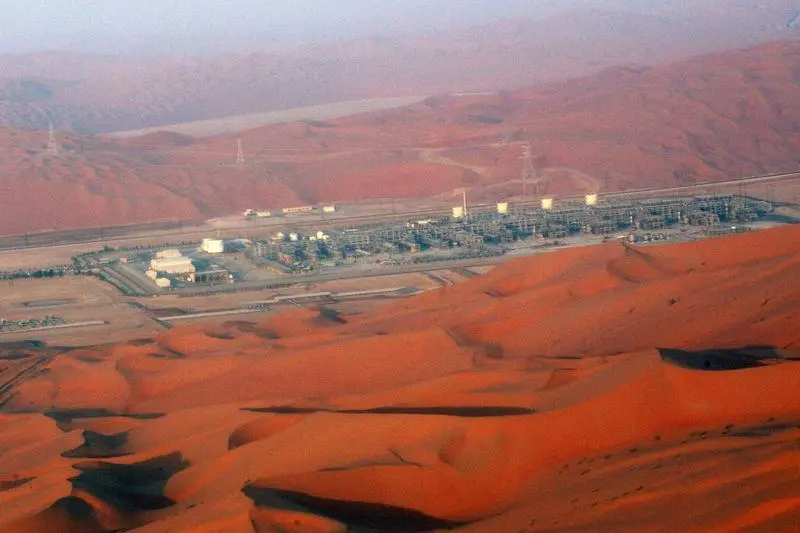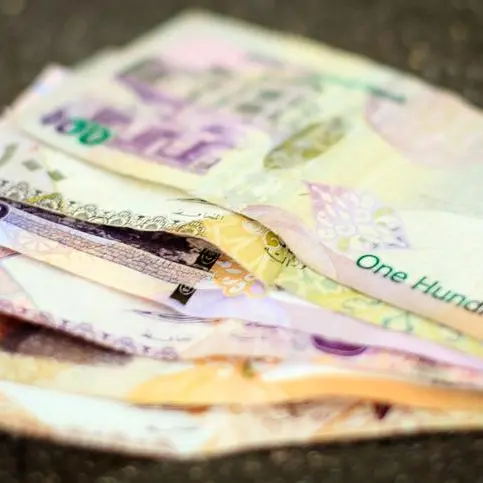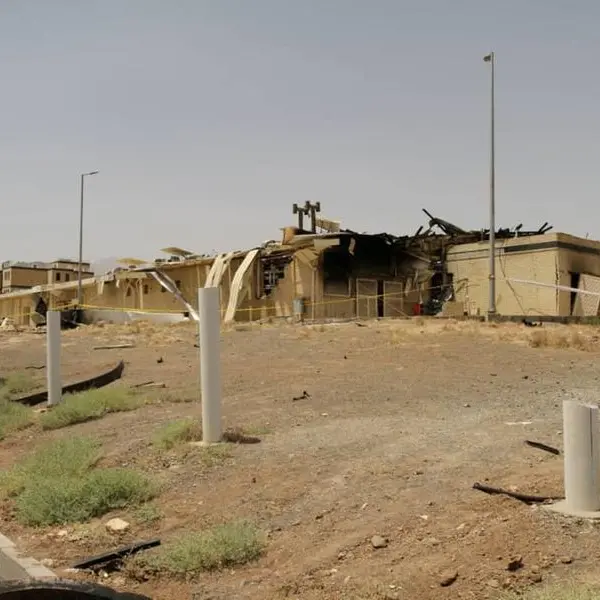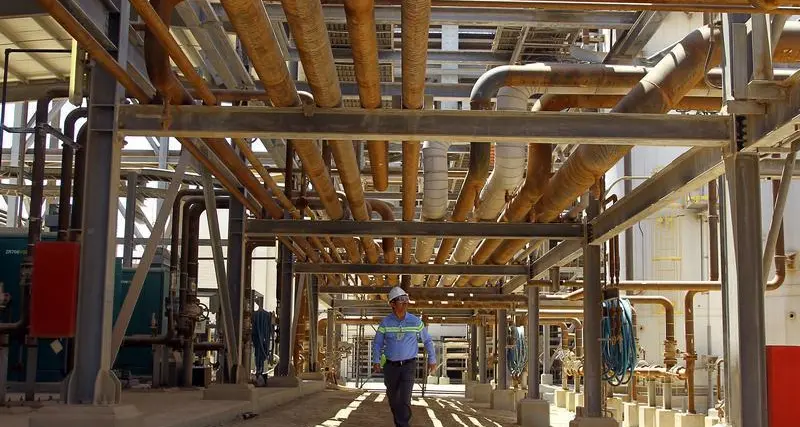PHOTO
(John Kemp is a Reuters market analyst. The views expressed are his own)
By John Kemp
LONDON, July 19 (Reuters) - Saudi Arabia has been progressively reducing its bloated domestic stocks of crude in a sign the global oil market is rebalancing, albeit more slowly than OPEC anticipated.
Saudi Arabia's domestic crude stocks declined in 16 of the 19 months between November 2015 and May 2017 according to government data reported to the Joint Organisations Data Initiative .
Domestic stocks fell to just 259 million barrels at the end of May 2017, which was the lowest level since January 2012, according to updated figures published on Tuesday.
Stocks were down by 30 million barrels compared with the same month a year earlier and are now down by 71 million barrels from their peak in October 2015 .
Like other producers, Saudi Arabia holds stocks for a range of reasons, including the need to cover field maintenance and manage seasonal changes in consumption and exports.
Operational stocks are held to satisfy demand for exports as well as from domestic oil refineries and power plants burning crude to produce electricity.
The best way to track stocks over time is to compare them with the total daily requirement from exports, refinery intake and direct crude burn.
In June 2014, just before oil prices started sliding, Saudi crude stocks totalled 286 million barrels, equivalent to about 28.4 days worth of combined exports, refinery intake and direct crude use.
By October 2015, with prices well on the way to their nadir in January 2016, stocks had risen to 329 million barrels, equivalent to 32.7 days worth of combined requirements.
Since then, stocks have been progressively reduced and were down to just 259 million barrels and 25.7 days worth of combined requirements in May 2017 .
Saudi crude stocks display a strong element of seasonality owing to refinery maintenance schedules and increased crude consumption for electricity generation during the hot summer months.
Nonetheless, there has been a clear downward trend in both absolute stocks and days of cover since late 2015 as production has fallen short of combined requirements.
The rise and subsequent fall in Saudi crude stocks illustrates how heavily oversupplied the crude market was during 2014/15 as well as the gradual rebalancing under way during 2016/17.
During the slump, Saudi Arabia struggled to find buyers for all its production. Now the kingdom is taking advantage of strong demand to cut excess stocks to more normal levels.
Assuming the data are accurate, the persistent draw in domestic stocks likely explains why Saudi officials sound confident when they say the global oil market is rebalancing.
SUPPLY CHAIN
In general, crude moves down the supply chain from areas of net production to areas of net refining and consumption ("Oil inventories become more visible", Reuters, May 17, 2017).
Despite significant trading activity around particular cargoes, the movement of crude essentially occurs in only one direction.
For commercial reasons, it makes no sense to move crude back up the supply chain, away from consumers and refineries back towards producers.
Crude stocks are positioned as close to refiners and final consumers as possible, subject to the availability and cost of storage.
Stocks in producing countries therefore tend to be the last to fill during periods of oversupply but first to drain during periods of undersupply.
The build up of crude stocks in Saudi Arabia during the later stages of the slump in 2015 and the subsequent draw down from 2016 is consistent with this pattern.
The turning point in Saudi stocks in October/November 2015 roughly coincided with the turning point in crude prices and calendar spreads in December 2015/January 2016.
Saudi crude stocks have fallen much faster than crude stocks in the principal refining areas including the United States.
Saudi crude stocks have fallen by 30 million barrels since May 2016 compared with a drawdown of just 6 million barrels in the United States over the same period.
Saudi stocks are down 71 million barrels since October 2015 while U.S. crude stocks are still up by 48 million barrels over the same period.
Something similar seems to have occurred with the draw down in Iran's crude stocks held in floating storage during 2016.
The persistent draw down in Saudi stocks is obviously a disequilibrium phenomenon since it cannot continue forever.
Releasing producer stocks into the supply chain during 2016 and the first half of 2017 added to the sense of continuing oversupply.
But as excess producer stocks are exhausted, the supply situation will feel tighter in the second half of 2017 and into 2018 -- other things being equal.
((john.kemp@tr.com; +44 207 542 9726 and on twitter @JKempEnergy))
By John Kemp
LONDON, July 19 (Reuters) - Saudi Arabia has been progressively reducing its bloated domestic stocks of crude in a sign the global oil market is rebalancing, albeit more slowly than OPEC anticipated.
Saudi Arabia's domestic crude stocks declined in 16 of the 19 months between November 2015 and May 2017 according to government data reported to the Joint Organisations Data Initiative .
Domestic stocks fell to just 259 million barrels at the end of May 2017, which was the lowest level since January 2012, according to updated figures published on Tuesday.
Stocks were down by 30 million barrels compared with the same month a year earlier and are now down by 71 million barrels from their peak in October 2015 .
Like other producers, Saudi Arabia holds stocks for a range of reasons, including the need to cover field maintenance and manage seasonal changes in consumption and exports.
Operational stocks are held to satisfy demand for exports as well as from domestic oil refineries and power plants burning crude to produce electricity.
The best way to track stocks over time is to compare them with the total daily requirement from exports, refinery intake and direct crude burn.
In June 2014, just before oil prices started sliding, Saudi crude stocks totalled 286 million barrels, equivalent to about 28.4 days worth of combined exports, refinery intake and direct crude use.
By October 2015, with prices well on the way to their nadir in January 2016, stocks had risen to 329 million barrels, equivalent to 32.7 days worth of combined requirements.
Since then, stocks have been progressively reduced and were down to just 259 million barrels and 25.7 days worth of combined requirements in May 2017 .
Saudi crude stocks display a strong element of seasonality owing to refinery maintenance schedules and increased crude consumption for electricity generation during the hot summer months.
Nonetheless, there has been a clear downward trend in both absolute stocks and days of cover since late 2015 as production has fallen short of combined requirements.
The rise and subsequent fall in Saudi crude stocks illustrates how heavily oversupplied the crude market was during 2014/15 as well as the gradual rebalancing under way during 2016/17.
During the slump, Saudi Arabia struggled to find buyers for all its production. Now the kingdom is taking advantage of strong demand to cut excess stocks to more normal levels.
Assuming the data are accurate, the persistent draw in domestic stocks likely explains why Saudi officials sound confident when they say the global oil market is rebalancing.
SUPPLY CHAIN
In general, crude moves down the supply chain from areas of net production to areas of net refining and consumption ("Oil inventories become more visible", Reuters, May 17, 2017).
Despite significant trading activity around particular cargoes, the movement of crude essentially occurs in only one direction.
For commercial reasons, it makes no sense to move crude back up the supply chain, away from consumers and refineries back towards producers.
Crude stocks are positioned as close to refiners and final consumers as possible, subject to the availability and cost of storage.
Stocks in producing countries therefore tend to be the last to fill during periods of oversupply but first to drain during periods of undersupply.
The build up of crude stocks in Saudi Arabia during the later stages of the slump in 2015 and the subsequent draw down from 2016 is consistent with this pattern.
The turning point in Saudi stocks in October/November 2015 roughly coincided with the turning point in crude prices and calendar spreads in December 2015/January 2016.
Saudi crude stocks have fallen much faster than crude stocks in the principal refining areas including the United States.
Saudi crude stocks have fallen by 30 million barrels since May 2016 compared with a drawdown of just 6 million barrels in the United States over the same period.
Saudi stocks are down 71 million barrels since October 2015 while U.S. crude stocks are still up by 48 million barrels over the same period.
Something similar seems to have occurred with the draw down in Iran's crude stocks held in floating storage during 2016.
The persistent draw down in Saudi stocks is obviously a disequilibrium phenomenon since it cannot continue forever.
Releasing producer stocks into the supply chain during 2016 and the first half of 2017 added to the sense of continuing oversupply.
But as excess producer stocks are exhausted, the supply situation will feel tighter in the second half of 2017 and into 2018 -- other things being equal.
((john.kemp@tr.com; +44 207 542 9726 and on twitter @JKempEnergy))












